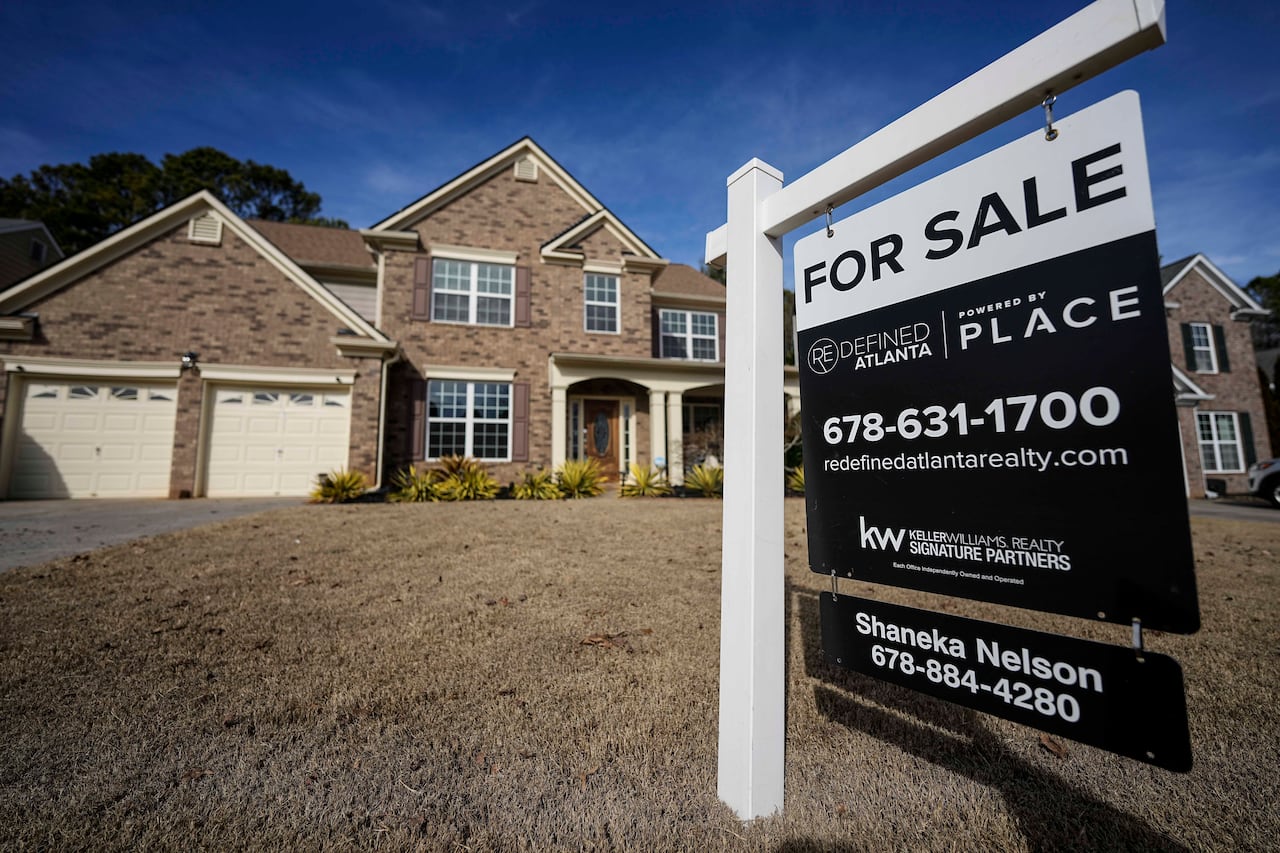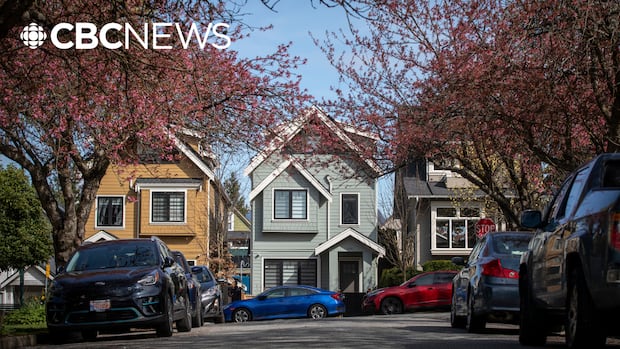U.S. President Donald Trump’s proposal for a 50-year mortgage may sound enticing to many first-time homebuyers in America seeking an affordable way to enter the housing market.
But many industry observers have panned the idea to extend the 30-year loan period that most in the U.S. sign up for.
And it’s very unlikely such an idea would gain traction anytime soon in Canada, where amortization periods have been shortened over the last two decades.
Trump first floated this idea earlier this week with a post on his social media site depicting an image of former president Franklin Delano Roosevelt under the heading “30-Year Mortgage,” alongside one of himself under the heading “50-Year Mortgage.”
That was followed by a post from Bill Pulte, director of the Federal Housing Finance Agency, who said that longer mortgages would be “a complete game changer.” Meanwhile, the White House has said extending amortization could ease housing affordability pressures.
“All it means is you pay less per month,” Trump said in an interview with Fox News. “You pay it over a longer period of time. It’s not like a big factor. It might help a little bit.”
Benefits and costs
Joseph Gyourko, a professor of real estate and finance at the Wharton School of the University of Pennsylvania, says there are both benefits and costs to a 50-year-mortgage.
The benefits are obvious, he said, echoing Trump that the monthly mortgage payment would be lower. But the costs include paying “a whole lot more” in mortgage interest over the life of the loan.
For example, according to a calculation by The Associated Press, a person buying a $415,200 house (the average selling price of a home in the U.S. in September), would pay approximately $389,000 more in interest over the span of a 50-year mortgage compared to a 30-year mortgage.
“The reason you’re paying interest is you’re amortizing your loan very, very slowly,” Gyourko said. “Most of the early year payments are interest, they’re not principal.
“You’re mostly just paying interest over a long period of time,” he said. “So I would tell my kids, who are in their late 20s, don’t do this. I just don’t think the risks are worth the benefits.”
Gyourko says the real problem with affordability is not demand, but a lack of supply.
“This is a demand side intervention, and I think we should stay focussed on trying to build more.”
Richard Kent Green, a professor at the University of Southern California Marshall School of Business and an expert on housing markets, housing policy and mortgage finance, says a 50-year mortgage would reduce payments, but probably only by a small amount.
“One of the things we don’t know is what the interest would be on a 50-year [loan] relative to a 30-year loan. We know it would be higher. We don’t how much higher.
“So depending on what the interest rate could be, your savings could be as little as two, three per cent or maybe even less than that.”
More gimmick than solution
Meanwhile, Green says the holder of a 50-year loan will be building home equity very slowly. “So you’ll be more vulnerable to default if market conditions change, if house prices fall.”
He says he sees Trump’s proposal more “as a gimmick, not as a solution.”
As for Canada, there’s a fundamental difference in how mortgages are handled here compared to the U.S., said Penelope Graham, a mortgage expert at Ratehub.ca.
“The main reason is risk aversion in Canada,” she said.
Many Canadians don’t know the difference between an early and regular mortgage renewal — but understanding it could save you thousands. Mark Ting joins us to explain the key differences and share the strategies he’s used when locking in his own mortgage.
In the U.S., people are locked into the same rate for decades and may not renew their mortgage at all during that time period, Graham says, while in Canada, a mortgage holder is likely going to renew their mortgage three or four times over a 25 or 30-year period.
These differences are due to the way mortgages are funded in each country, she explained. In the U.S., mortgage lenders bundle their mortgages into investments and sell them as mortgage-backed securities.
“The reason they do this is, it takes the risk off of the actual financial institution. And it helps them actually fund these loans,” she said. “And it’s because of this structure that they can offer these really long-term loans.”
In Canada, mortgage loans are underpinned with deposit business — savings accounts and GICs, for example.
“And the risk timeline on those is usually five to 10 years. They can really only do that securely for five to 10 years,” Graham said.
“In the U.S., they’ve got a lot of securitized loans that are sold out to investors. But in Canada, everything has to be actually underpinned with real deposits.”
Graham says it’s not likely Canada would consider extending its maximum amortization period.
“There has been some early chatter, but it hasn’t really gone anywhere.”
Back in 2007, the Harper government permitted the Canada Mortgage and Housing Corporation (CMHC) to insure mortgages with amortizations of up to 40 years. But less than a year later, in the shadow of the U.S. mortgage crisis and financial meltdown, Ottawa tightened the rules, reducing the amortization period to 35 years.
And that amortization period has continued to shrink.

The government did it in phases, Graham says, but eventually reined in the amortization period back to its current 25 years for insured borrowers and 30 years for uninsured.
She says the government loosened up slightly last year, but only for insured first-time homebuyers, allowing them to amortize for up to 30 years.
“But that’s really been the only tweak we’ve seen to amortization length. And it’s unlikely that they will go backwards and make a 40-year amortization widely available,” she said.
“And the reason for that is, the longer a mortgage is, the more inherently risky and expensive it is.”
The federal government is allowing longer mortgage repayment periods for first-time buyers with insured mortgages on newly built homes. Andrew Chang explores the pros and cons of 30-year amortization vs. the previous 25-year rule for prospective homeowners. CORRECTION: At 1:38 in this video, we miscalculated that 20% of $500,000 is $125,000. It’s $100,000. It has been edited out for clarity.
In a statement to CBC News, Mortgage Professionals Canada said it has long advocated for extending insured amortizations from 25 to 30 years, and continues to encourage the federal government to broaden this option to all buyers.
But it acknowledge that “any consideration of longer amortization periods must be carefully balanced to protect the stability and integrity of our system.”
Mortgage expert Ron Butler says while the government has done some tinkering with amortization, it has proven that it’s reluctant to make this change.
“The government likes the fact that prices are coming down. They don’t want to create artificial stimulus with a 40 or … 50 year amortization.”
However, he believes they are reaching the point where they could allow a 30 year amortization period for all.
“Not quite yet, but it’s coming soon.” Butler said. “But that’ll be about it for the near term.”
www.cbc.ca (Article Sourced Website)
#Donald #Trumps #50year #mortgage #plan #panned #wouldnt #fly #Canada #CBC #News


